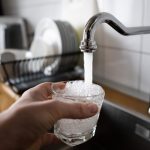Understanding Common Contaminants in Your Water and How Purification Systems Address Them

Understanding Common Contaminants in Your Water
One of the most common contaminants found in water is bacteria. Bacteria can enter the water supply from a variety of sources, including sewage leaks, animal waste, and even human waste. When consumed, bacteria can cause a range of health issues, from mild stomach upset to more serious illnesses. Another common contaminant is lead, which can leach into the water supply from old pipes and plumbing fixtures. Lead exposure can have serious long-term health effects, especially in children.
Other common contaminants include pesticides, herbicides, and volatile organic compounds (VOCs). These chemicals can enter the water supply from agricultural runoff, industrial waste, and other sources. Pesticides and herbicides can have toxic effects on the human body, while VOCs can contribute to respiratory issues and other health problems. Additionally, heavy metals such as mercury, arsenic, and cadmium can be found in water sources and pose serious health risks if consumed in high levels.
How Purification Systems Address Contaminants
Water purification systems are designed to remove a wide range of contaminants from your water supply, providing you with clean, safe water for drinking and other purposes. One of the most common types of water purification systems is a carbon filter. Carbon filters work by adsorbing contaminants onto the surface of the carbon, effectively removing them from the water. This type of filtration is effective at removing a wide range of contaminants, including bacteria, pesticides, and VOCs.
Another common type of water purification system is a reverse osmosis filter. Reverse osmosis works by forcing water through a semi-permeable membrane that acts as a barrier to contaminants. This process effectively removes a wide range of contaminants, including lead, heavy metals, and chemicals. Reverse osmosis is particularly effective at removing dissolved solids from water, making it a popular choice for areas with hard water or high mineral content.
UV water purification systems are another effective option for removing contaminants from water. UV light is used to inactivate bacteria, viruses, and other microorganisms that can be present in water. This type of purification system is particularly effective at removing biological contaminants and is often used in conjunction with other filtration methods to provide comprehensive water purification.
In addition to these common types of water purification systems, there are also specialized filtration systems available for addressing specific contaminants. For example, ion exchange filters are designed to remove heavy metals such as lead and mercury from water. Activated alumina filters can remove fluoride from water, while distillation systems can effectively remove dissolved solids and other contaminants.
Choosing the Right Water Purification System for Your Needs
When selecting a water purification system for your home, it’s important to consider the specific contaminants that are present in your water supply. You may want to have your water tested to determine which contaminants are present and at what levels. This information can help you choose a water purification system that is effective at removing the specific contaminants in your water.
Additionally, it’s important to consider the flow rate and capacity of the water purification system. If you have a large household or use a lot of water, you may need a system with a higher flow rate and capacity to meet your needs. It’s also important to consider factors such as maintenance requirements, energy usage, and cost when selecting a water purification system.
Summary
Understanding the common contaminants in your water and how water purification systems address them is important for ensuring that you have clean, safe water for drinking and other purposes. By selecting a water purification system that is effective at removing specific contaminants and meets your household’s needs, you can enjoy peace of mind knowing that your water is free from harmful contaminants.
Need Water Purification Systems in Scottsdale, AZ?
Welcome to WES Water! Since our beginning, we have serviced Arizona with high quality, water purification systems. With over 35 years of experience, we are the industry expert that you can count on to meet your water treatment needs. We provide water conditioning and purification solutions for residential, commercial and industrial applications. All of our water systems are designed to reduce water use, which makes them environmentally friendly and can reduce the cost. Most systems require little or no maintenance. We believe that everyone should have access to high-quality, alkaline water throughout their home. Give us a call today to receive your FREE information packet!
Categorised in: Water Purification System
